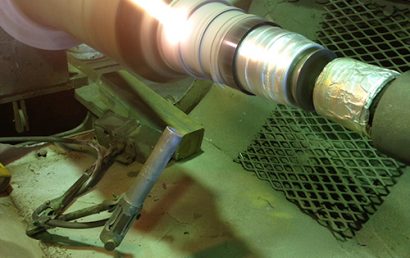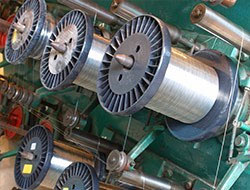Forming HVOF Coatings Via Plasma Spray Procedures
HVOF, or High Velocity Oxygen Fuel, begins with molten materials which are applied at high speeds. HVOF coatings can take on a vast array of unique properties covering a wide range of applications. In regard to the types of surfaces they can be used on, they are extremely versatile.
Simply put, the HVOF process of thermal spray coating is used to restore or improve the dimensions or properties of a component’s surface. This helps to significantly extend the life of equipment by increasing corrosion protection, wear resistance, and erosion resistance.
Though spray thermal can be used to apply any number of protective coatings, HVOF coatings applied through the plasma spray process are very nearly unbeatable. For a detailed look at HVOF coatings, click here.
Now, let’s take a look at how plasma spray procedures are used to form HVOF coatings.
The Plasma Spray Approach
Referred to as APS, regular atmospheric circumstances are generally where plasma spray coatings are made use of (the conditions under which they are used). The thermal spray coating process referred to as plasma spray – through a combination of hypercritical velocities, relatively inert spraying medium, high-energy heat source, and high temperature – produces coatings of the highest quality.
The process pretty much relies on the spraying of a heat softened material or molten material to provide a coating on a surface. Injected into a high temperature plasma flame, the powdered material is rapidly heated and accelerated to a high velocity.
LPPS, or VPS, is a protective gas used at a low stress for filling vacuum chambers. This provides a protective work environment for some plasma spraying methods. Compared to many other thermal spray processes, plasma sprayed coatings are commonly cleaner, stronger, and denser. There are exceptions to this rule, however. The cold spray process, HVAF (High Velocity Air Fuel), and HVOF are exceptions. The widest selection of applications and spray thermal coatings are plasma spray HVOF coatings. This is one of the most versatile procedures around.
Flame Vs. Plasma
The question has been posed, “Is flame a plasma?”, or “Do flames contain plasma?” The answer boils down to how hot the flame gets. Only if it gets hot enough can it become a plasma (plasma is considered an ionized gas). Lower temperature flames don’t contain enough ionization to be classified as a plasma. A higher temperature flame, on the other hand, certainly has the required amounts of freed ions and electrons to act as a plasma.
As an example, a candle flame could clearly not be considered a plasma.
If something “acts like a plasma”, it is low-frequency electro-magnetic wave reflective – as with radio waves. As a more basic explanation, it shields out electric fields.
Rely On A&A Coatings for Your Plasma Spray And HVOF Coatings
For over 70 years, A&A Coatings has been at the forefront of the thermal coating industry. We are devoted to the application of hard faced, ceramic, cermet, and metal coatings. We provide a service that is unmatched through not only our coating specialization but with machining, lapping, and grinding capabilities.
At A&A Coatings, we have hundreds of blends of coatings. Our team can help you find the perfect custom solution for your needs. Save thousands of dollars by extending the life of your equipment and protect against the elements. From corrosion protection to repair and restoration, our services are invaluable to any number of industries today. For more information, contact one of our helpful representatives.



